მსუბუქი ავტომობილები

TYPE A
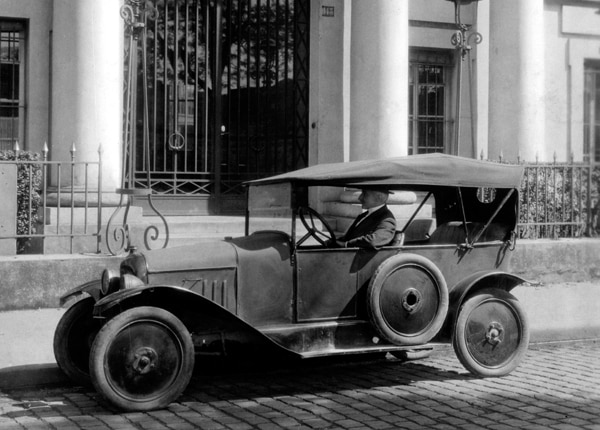
1918 წლის 20 ნოემბერს საფრანგეთის ავტოტრანსპორტის დეპარტამენტს გადაეცა მოდელი 10HP იგივე Type A დასამტკიცებლად. 1919 წლის მაისის ბოლოს დაიწყო ავტომობილის წარმოება და 7 ივლისს Type A გამოჩნდა ბაზარზე.
ეს იყო სიტროენის პირველი ავტომობილი და ევროპის პირველი მასიური წარმოების ავტობომილი, რომელიც ითვალისწინებდა ჰენრი ფორდის მიერ 10 წლის წინ დეტროიტის საწარმოსთვის შექმნილ პრინციპებს.
ინოვაციური Type A აღჭურვილი იყო 1,327 სმ3 სიგრძის ოთხ-ცილინდრიანი ძრავით, რომელიც 65კმ/სთ-ზე მეტს ავითარებდა. პირველად, კლიენტს შესაძლებლობა ქონდათ შეეძინათ მაღალიშესრულების ავტომობილი სრული კომპლექტაციით. Type A-ს წარმოება 1921 წლის ივნისამდე გაგრძელდა და წარმოდგენილი იყო 10 სახეობით.
B სერია
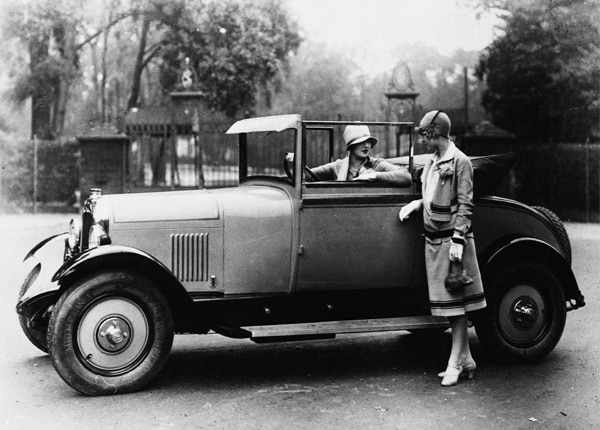
Type A ჩაანაცვლა B2-მა, ეს იყო მეტი შესაძლებელობის ავტომობილი, უფრო ძლიერი ძრავით და გაუმჯობესებული გაგრილების სისტემით. ამ მონაცემებით B2-მა ბაზარზე წარმატებას მარტივად მიაღწია. 1924 წელს, ხელმისაწვდომი იყო B2-ის 12 ვერსია, ამას დაემატა 3 ახალი მოდელი, სახელწოდებით B10, რომელის ძირითადი კორპუსი შედგებოდა ფოლადისგან. B12, რომლის წარმოებაც 1925 წელს დაიწყო მოიცავდა ფოლადის კორპუსის 6 სახეობას და „ხე და ლითონი“-ს 5 სახეობას. B12-მა რეალურად ჩაანაცვლა B2 და B10, თუმცა B14-ის გამოშვების შემ ის სრულიად გაიჩინარდა. 1928 წელს , B სერიის წარმოების ბოლო წელს, სიტროენმა გამოუშვა B14-ის კომერციული ვერსია (B15) და ლიმიტირებული გამოშვება B18 კოლონიებისთვის.ნამავდროულად, 1922 წლიდან 1926 წლამდე , სიტროენმა ბაზარზე წარმოადგინა კომპაქტური 5HP. ამ მოდელის ყველაზე ცნობილ ვერსიას წარმოადგენს Trèfle.
C სერია
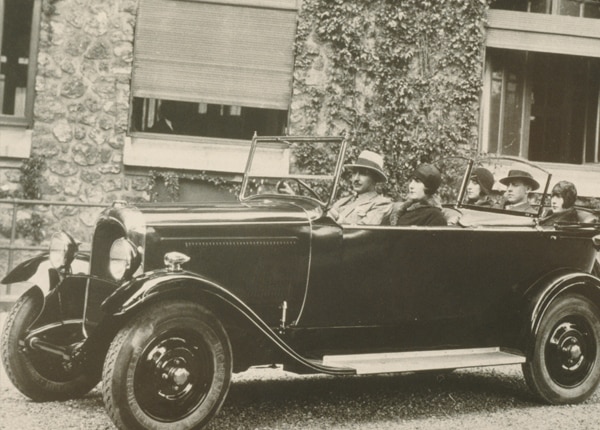
1928 წელს პარიზის ავტო შოუზე სიტროენის სამოდელო რიგი საზეიმოდ გაიხსნა. ბრენდის ისტორიაში ეს მნიშვნელოვანი თარიღია, რადგან სიტროენმა წარმოადგინა არა მხოლოდ ახალი C4 (რომელმაც ჩაანაცვლა B14), არამედ ფეშენებელური მოდელი C6 – ექვს-ცილინდრიანი ძრავით. მათი წინამორბედების ინვოაციური მიღწევების გათვალისწინებით და ფოლადის ერთიანი კორპუსით შემკული სიტროენის ეს ორი მოდელი (C4 და C6) 1932 წლამდე დიდ წარმატებას იზიარებდა. 1931 წელს სიტროენის სამოდელო რიგი სულ მცირე 47 სხვადასხვა მოდელს ფლობდა. 1932 წლის აპრილს, C4 და C6 მოდელებისთვის შეიქმნა ე.წ “მცურავი ძრავა” : ეს იყო რევოლუცია საავტომობილო კომფორტის სფეროში. მას შემდეგ C4-მა უკვდავი რეპუტაცია მოიპოვა და 1950-იანებშიც კი ხშირად შეინიშნებოდა.
ROSALIE
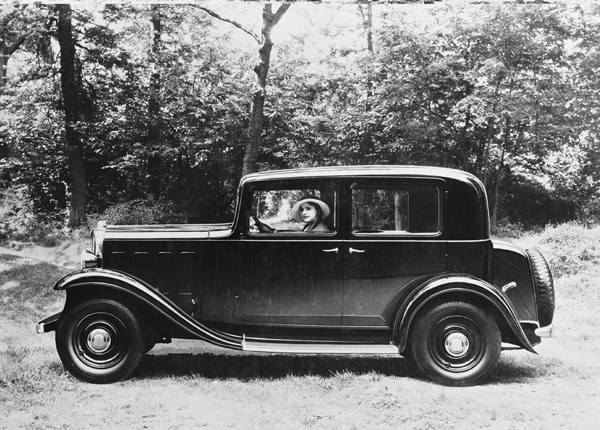
1932 წელს, პარიზის ავტო შოუზე სიტროენმა წარადგინა 8CV, 10CV და 15CV. პირველმა ორმა მოდელმა ჩაანაცვლა C4, ხოლო მესამე მოდელმა, რომელიც ექვს ცილინდრიანი ძრავით პოზიციონირებდა, ლოგიკურად შეცვალა C6.
1931 წლიდან , ლინას-მონთლერის (Linas-Montlhéry ) ჩქაროსნულ წრეზე , სამივე ავტომობილმა სიჩქარის ახალი რეკორდი აჩვენა და Rosalie-ის მეტსახელიც მოირგო, 8CV Rosalie-ის შემდეგ.
1934 წლის იანვარში, სიტროენმა მოდერნიზებული ავტომობილები წარმოადგინა სახელწოდებით Nouvel Habillage. მომდევნო მაისში, ავტომობილებს დაემატა წინა წამყვანი ბორბლების მუხრუჭი ტორსიონის ძელით. 1934 წელს Traction Avant-ის გამოშვების შემდეგ, Rosalie-იმ უკანა რიგებში გადაინაცვლა. თუმცა Rosalie-ის ავტომობილების კარიერა ამით არ დასრულებულა. ავტომობილები ახალი ძრავით 7CV-ით და 11CV-ით გამოჩნდა და 1938 წლამდე 7UA და 11UA სახელწოდებით იწარმოებოდა.
TRACTION AVANT
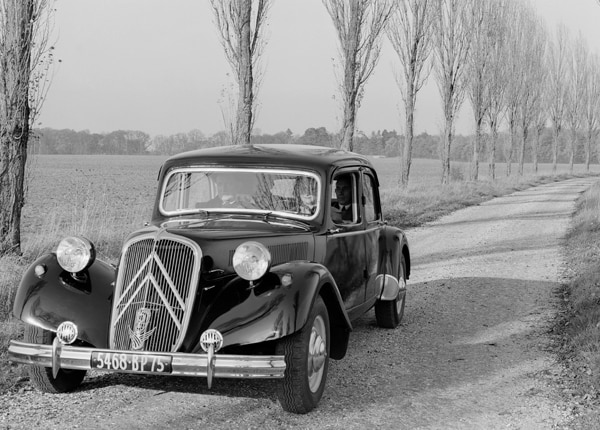 1934 წლის მაისს, პირველი Traction Avant-ის (7CV) დებიუტმა, რევულუციური გარდატეხა მოახდინა მსოფლიო საავტომობილო სფეროში. აქამდე, არცერთი წარმოების ავტომობილს ჰქონია ამდენი ინოვაციური ელემენტი, მაგ: ერთიანი ფოლადის კორპუსი, ოთხივე ბორბლის ჰიდრავლიკური მუხრუჭი, დამოუკიდებელი ბორბლის შეჩერების ფუნქცია, ე.წ. “მცურავი ძრავა”, რომელიც პასუხიისმგებელია ვიბრაციის შემცირებაზე.
1934 წლის მაისს, პირველი Traction Avant-ის (7CV) დებიუტმა, რევულუციური გარდატეხა მოახდინა მსოფლიო საავტომობილო სფეროში. აქამდე, არცერთი წარმოების ავტომობილს ჰქონია ამდენი ინოვაციური ელემენტი, მაგ: ერთიანი ფოლადის კორპუსი, ოთხივე ბორბლის ჰიდრავლიკური მუხრუჭი, დამოუკიდებელი ბორბლის შეჩერების ფუნქცია, ე.წ. “მცურავი ძრავა”, რომელიც პასუხიისმგებელია ვიბრაციის შემცირებაზე.
ამ ყველფრის მიუხედავად, 7CV-ს წარმოება 1941 წლის ივნისს შეჩერდა, 11CV-იმ, რომელიც 1934 წლის სექტემბერში შემოვიდა ბაზარზე, განვითარება განაგრძო 1957 წლის ივლისამდე. ექვს-ცილინდრიანი ძრავით დაკომპლექტებული სიტროენ 15CV კი 1938დან – 1956მდე იწარმოებოდა.
1954 წლის აპრილს, სიტროენმა გამოუშვა სპეციალური მოდელი სახელწოდებით 15H. მისი ჰიდროპნევმატური უკანა შეჩერების სისტემის შედეგად შეიქმნა მომავალი DS-ი.
2CV და წარმოებული ავტომობილები
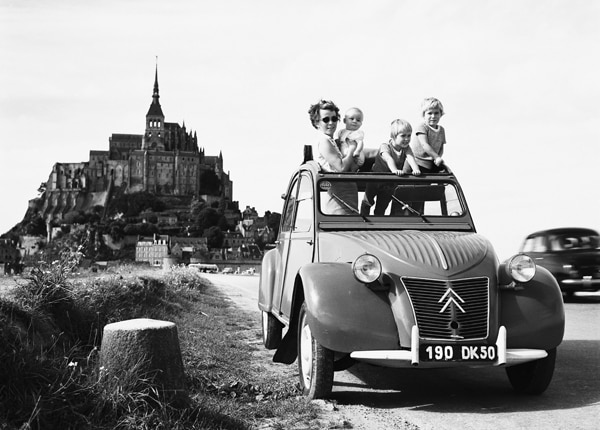 მიშელინის მიერ ჩატარებული კვლევიდან ჩამს რომ 2CV თავდაპირველად ჯერ კიდევ XX საუკუნის 20-იანი წლების დასაწყისში გამოჩნდა, როგორც “ხალხის ავტომობილი”. დიზაინის შექმნაზე მუშაობა 1936 წელს დაიწყო , მაგრამ პირველი მოდელის პრეზენტაცია და გაშვება, რომელიც 1939 წლის ოქტომბერში იყო დაგეგმილი, ომის დაწყების გამო გაუქმდა.
მიშელინის მიერ ჩატარებული კვლევიდან ჩამს რომ 2CV თავდაპირველად ჯერ კიდევ XX საუკუნის 20-იანი წლების დასაწყისში გამოჩნდა, როგორც “ხალხის ავტომობილი”. დიზაინის შექმნაზე მუშაობა 1936 წელს დაიწყო , მაგრამ პირველი მოდელის პრეზენტაცია და გაშვება, რომელიც 1939 წლის ოქტომბერში იყო დაგეგმილი, ომის დაწყების გამო გაუქმდა.
დიზაინის მრავალი ცვლილების შემდეგ, საბოლოოდ 2CV ოფიციალურად წარადგინეს 1948 წლის პარიზის საავტომობილო შოუზე. ლევალუას (Levallois )ქარხანაში წარმოება მხოლოდ მომდევნო წელს დაიწყო და 42 წლის განმავლობაში გაგრძელდა, საბოლოოდ კი მოდელზე მუშაობა 1990 წლის 27 ივლისს პორტუგალიის Mangualde-ეს ქარხანაში დასრულდა!
თავისი ხანგრძლივი მოღვაწეობის განმავლობაში “Duck” (‘იხვი”) უამრავ მოდელის შთაგონების წყაროდ იქცა, მათ შორის იყო 1967 წლის სექტემბერში წარმოდგენილი Dyane და 1968 წლის მაისში კი Méhari, თავისი ორიგინალი ABS პლასტიკური კორპუსით.
DS
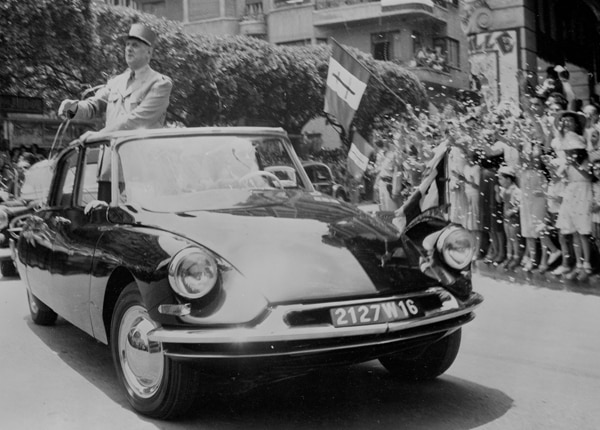 DS– მა მოახდინა რევოლუცია ტექნოლოგიისა და დიზაინის მიმართულებით. ის 1955 წელს, პარიზის საავტომობილო შოუზე გამოჩნდა და ეს იყო ავტომობილი პირდაპირ სამეცნიერო ფანტასტიკიდან. ორიგინალური დიზაინით, ავანგარდული ინტერიერის განლაგებით, ჰიდროპნევმატური სავალი და სრულად ჰიდრავლიკური საჭით, მან დიდი აჟიოტაჟი გამოიწვია. შოუს განმავლობაში თითქმის 80 000 შეკვეთა იქნა მიღებული.
DS– მა მოახდინა რევოლუცია ტექნოლოგიისა და დიზაინის მიმართულებით. ის 1955 წელს, პარიზის საავტომობილო შოუზე გამოჩნდა და ეს იყო ავტომობილი პირდაპირ სამეცნიერო ფანტასტიკიდან. ორიგინალური დიზაინით, ავანგარდული ინტერიერის განლაგებით, ჰიდროპნევმატური სავალი და სრულად ჰიდრავლიკური საჭით, მან დიდი აჟიოტაჟი გამოიწვია. შოუს განმავლობაში თითქმის 80 000 შეკვეთა იქნა მიღებული.
მისი წინა მხარე 1967 წლის სექტემბერში განახლდა, მას უკვე ოთხი მაშუქი ჰქონდა. 1956 წლის ოქტომბერში, ხელმისაწვდომი გახდა სხვადასხვა დიზაინის სალონი და კაბრიოლეტის ვერსიები .
DS– ის წარმოება 1975 წლის 24 აპრილს შეჩერდა. დღეს, DS ავანგარდული საავტომობილო დიზაინის სიმბოლიზებას განაგრძობს.
AMI
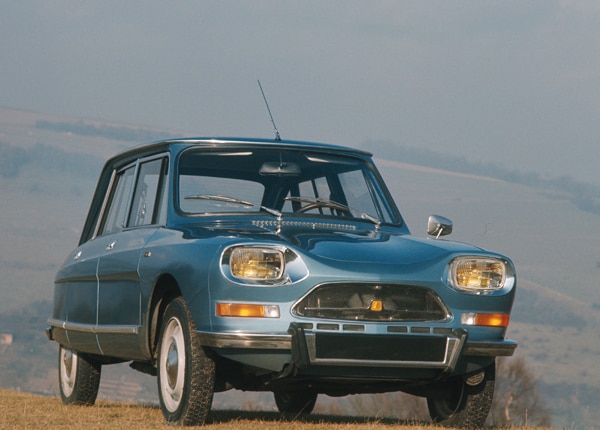 Launched in 1961, the Ami 6 was an intermediate model fitted with a 3CV engine. Skilfully combining features from the 2CV and the DS, the Ami 6 also sported original design lines with its reverse raked rear window. An estate version arrived in August 1964.
Launched in 1961, the Ami 6 was an intermediate model fitted with a 3CV engine. Skilfully combining features from the 2CV and the DS, the Ami 6 also sported original design lines with its reverse raked rear window. An estate version arrived in August 1964.
In 1969, the Ami 6 was replaced by the Ami 8, which had a more conventional rear window for the saloon version. This new model was the basis for the astonishing M35 prototype (500 examples) equipped with a rotary piston engine (heralding that of the GS Birotor) and DS-type hydropneumatic suspension.
In January 1973, the Ami 8 produced the Ami Super, equipped with the 1,015 cm3 four-cylinder engine of the GS. The Ami Super ended its career in July 1976 and the Ami 8 two years later.
SM
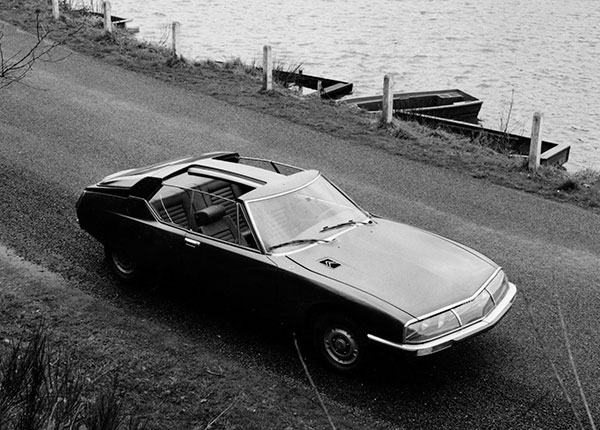 With the SM, Citroën endowed its range with a flagship of superb design. This luxury limousine, equipped with a V6 Maserati engine, reaped all the benefits of the expertise acquired through the DS in front wheel-drive technology, as well as in hydraulics and suspension. It featured a five-speed gearbox and DIRAVI/VariPower steering (hydraulic power steering with power-assisted return).
With the SM, Citroën endowed its range with a flagship of superb design. This luxury limousine, equipped with a V6 Maserati engine, reaped all the benefits of the expertise acquired through the DS in front wheel-drive technology, as well as in hydraulics and suspension. It featured a five-speed gearbox and DIRAVI/VariPower steering (hydraulic power steering with power-assisted return).
Launched in March 1970, the SM won unanimous acclaim for its original, innovative design. Its exceptional dynamic qualities attracted connoisseurs in France, Europe and also the US. However the SM ended its career in July 1975, a victim of rising fuel costs and motorway speed limits.
GS
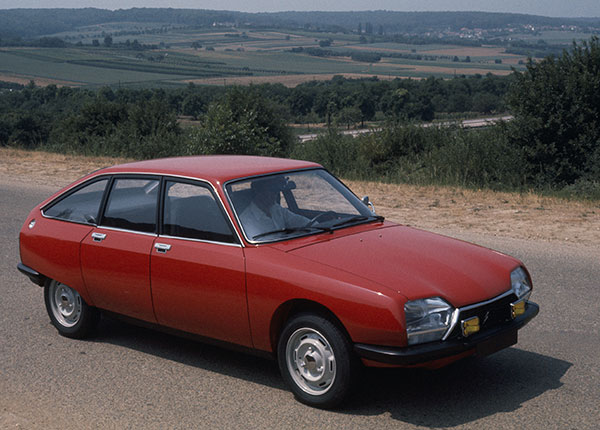 The GS embodied the best of Citroën’s expertise applied to a production vehicle. It was a front-wheel drive, with a flat four-cylinder air cooled engine, hydropneumatic suspension, and also bodywork that firmly established it as the world’s most aerodynamic production car.
The GS embodied the best of Citroën’s expertise applied to a production vehicle. It was a front-wheel drive, with a flat four-cylinder air cooled engine, hydropneumatic suspension, and also bodywork that firmly established it as the world’s most aerodynamic production car.
Launched in July 1970, the GS was positioned between the Ami 8 and the DS. An estate version became available one year later. In September 1979, the GS became the GSA and continued to pursue a successful market career until July 1986.
September 1973 saw the launch of the GS Birotor equipped with a twin-rotor engine. For the same reasons as the SM, the GS Birotor saw its market career come to a premature end in October 1975.
CX
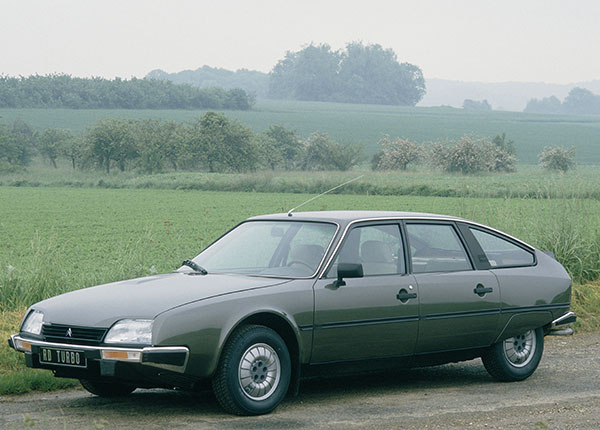 Launched in October 1974, the CX was a fitting successor to the DS. Its original design and innovative interior styling made it part of the traditionof great Citroën vehicles. Its hydropneumatic suspension delivered exceptional ride and comfort.
Launched in October 1974, the CX was a fitting successor to the DS. Its original design and innovative interior styling made it part of the traditionof great Citroën vehicles. Its hydropneumatic suspension delivered exceptional ride and comfort.
In September 1975, the CX became the first Citroën production vehicle to be fitted with a diesel engine. In September 1984, it became France’s fastest road car with the CX GTI Turbo and its top speed of 220 kph.
Restyled in July 1985, the CX ended its career in July 1991. It is remembered today as a car of superlative quality.
LN
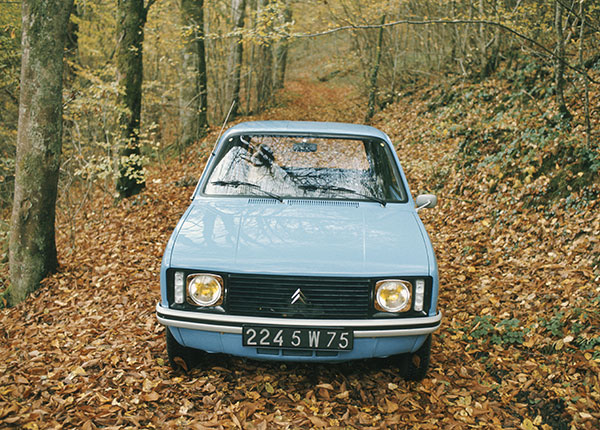 The LN, launched in October 1976, was the result of agreements signed two years earlier by Peugeot and Citroën on the founding of the PSA Group. The body of the new model was based on the Peugeot 104, while the two-cylinder air-cooled engine was similar to that of the Ami 8.
The LN, launched in October 1976, was the result of agreements signed two years earlier by Peugeot and Citroën on the founding of the PSA Group. The body of the new model was based on the Peugeot 104, while the two-cylinder air-cooled engine was similar to that of the Ami 8.
In September 1978, the LN gained a more powerful engine (upgraded to 652 cm3 from 602 cm3) and became the LNA. Four years later, the range was expanded to include a model with a 1,124 cm3 four-cylinder water-cooled engine.
Appreciated both in the city and the countryside, this compact car was particularly popular with female customers. It was removed from the catalogue in September 1986.
VISA
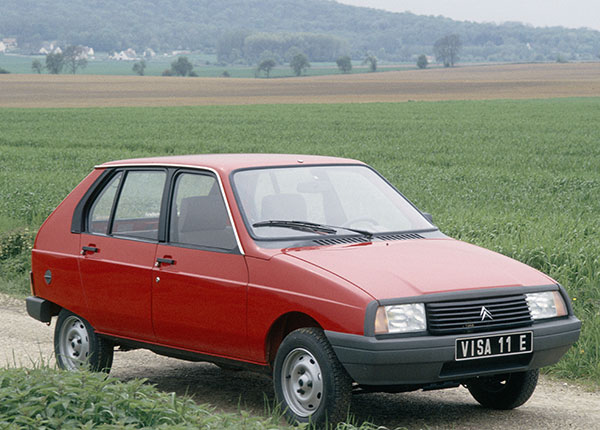 The Visa was presented at the 1978 Paris Motor Show. Based on the four-door Peugeot 104, it shipped with a choice of two engines: a 652 cm3 longitudinal two-cylinder air-cooled unit or a 1,124 cm3 transverse four-cylinder water-cooled unit.
The Visa was presented at the 1978 Paris Motor Show. Based on the four-door Peugeot 104, it shipped with a choice of two engines: a 652 cm3 longitudinal two-cylinder air-cooled unit or a 1,124 cm3 transverse four-cylinder water-cooled unit.
The Visa combined original design lines with an interior layout that was pure Citroën, focusing on ergonomics and driver comfort. With several body styles launched over the years, the Visa was both an open-top and a road car, economical and sporty.
A restyling in March 1981 made the Visa even more attractive. Three years later, it gained a 1,769 cm3 diesel engine. The Visa made a discreet exit from the Citroën catalogue in July 1988.
1980s
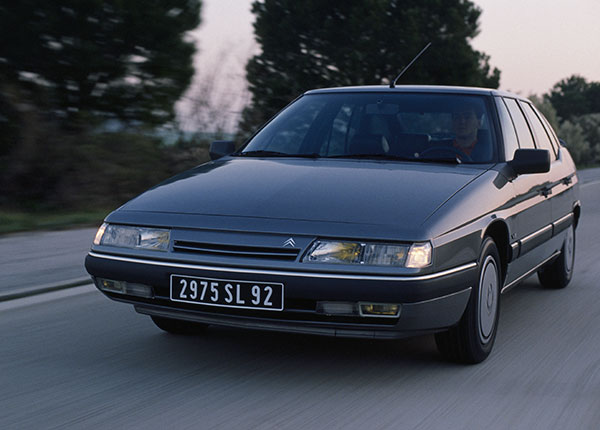 For Citroën, the 1980s was partly a decade of tradition, with the 2CV and CX, but also a decade of renewed vitality, illustrated by the new models that heralded a new era of prosperity for the brand.
For Citroën, the 1980s was partly a decade of tradition, with the 2CV and CX, but also a decade of renewed vitality, illustrated by the new models that heralded a new era of prosperity for the brand.
October 1982, for example, saw the launch of the BX, a car designed by Italy’s renowned Bertone. Four years later in 1986, the compact AX made its debut, in three- and five-door versions.
The end of the decade was marked by the XM, a new executive model launched in May 1989. Depending on the model, it was equipped with Hydractive hydropneumatic suspension and a V6 engine in a subtle blend of innovation and tradition.
1990s
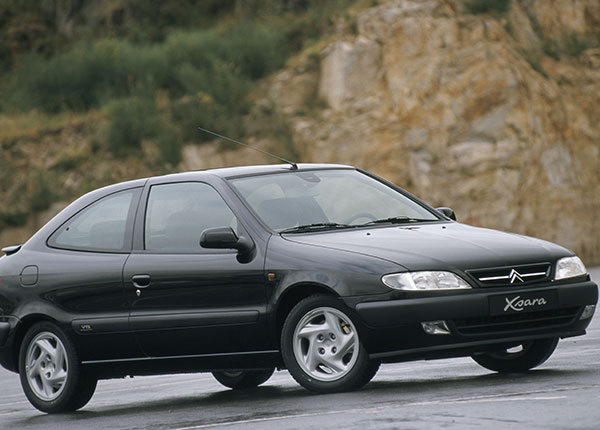 In the 1990s, Citroën made the transformation that would take it fully into the 21st century. After the 2CV took its final bow on 27 July 1990, Citroën continued to renew and expand the range,with increased drive and vitality.
In the 1990s, Citroën made the transformation that would take it fully into the 21st century. After the 2CV took its final bow on 27 July 1990, Citroën continued to renew and expand the range,with increased drive and vitality.
The first car of the decade was the ZX in March1991. It was followed two years later by the elegant Xantia and then, in 1994, by the Evasion/Synergie MPV.
The year 1996 saw the arrival of the Berlingo Multispace and Saxo, while the Xsara made its debut in 1997. As well as notching up a string of victories in the World Rally Championship, the Xsara also produced the Xsara Picasso, an innovative compact MPV, in 1999.